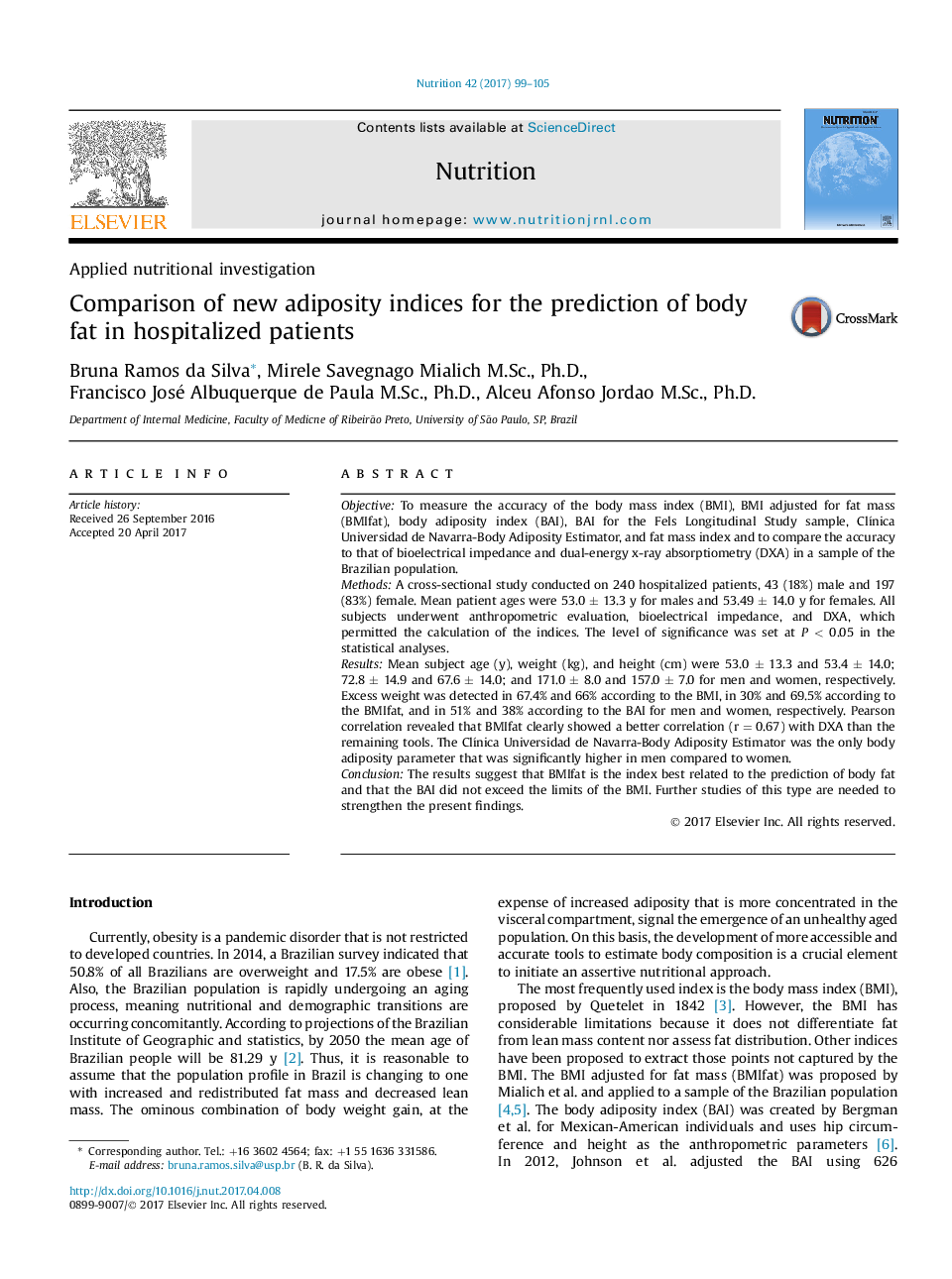| کد مقاله | کد نشریه | سال انتشار | مقاله انگلیسی | نسخه تمام متن |
|---|---|---|---|---|
| 5656865 | 1589656 | 2017 | 7 صفحه PDF | دانلود رایگان |
- The effectiveness of body adiposity indices in predicting adiposity was analyzed.
- Body mass index can be limited in quantifying adiposity in hospitalized patients, and other new body adiposity indices can be used.
- Body composition field methods are better in predicting fat mass.
ObjectiveTo measure the accuracy of the body mass index (BMI), BMI adjusted for fat mass (BMIfat), body adiposity index (BAI), BAI for the Fels Longitudinal Study sample, ClÃnica Universidad de Navarra-Body Adiposity Estimator, and fat mass index and to compare the accuracy to that of bioelectrical impedance and dual-energy x-ray absorptiometry (DXA) in a sample of the Brazilian population.MethodsA cross-sectional study conducted on 240 hospitalized patients, 43 (18%) male and 197 (83%) female. Mean patient ages were 53.0 ± 13.3 y for males and 53.49 ± 14.0 y for females. All subjects underwent anthropometric evaluation, bioelectrical impedance, and DXA, which permitted the calculation of the indices. The level of significance was set at P < 0.05 in the statistical analyses.ResultsMean subject age (y), weight (kg), and height (cm) were 53.0 ± 13.3 and 53.4 ± 14.0; 72.8 ± 14.9 and 67.6 ± 14.0; and 171.0 ± 8.0 and 157.0 ± 7.0 for men and women, respectively. Excess weight was detected in 67.4% and 66% according to the BMI, in 30% and 69.5% according to the BMIfat, and in 51% and 38% according to the BAI for men and women, respectively. Pearson correlation revealed that BMIfat clearly showed a better correlation (r = 0.67) with DXA than the remaining tools. The ClÃnica Universidad de Navarra-Body Adiposity Estimator was the only body adiposity parameter that was significantly higher in men compared to women.ConclusionThe results suggest that BMIfat is the index best related to the prediction of body fat and that the BAI did not exceed the limits of the BMI. Further studies of this type are needed to strengthen the present findings.
Journal: Nutrition - Volume 42, October 2017, Pages 99-105
